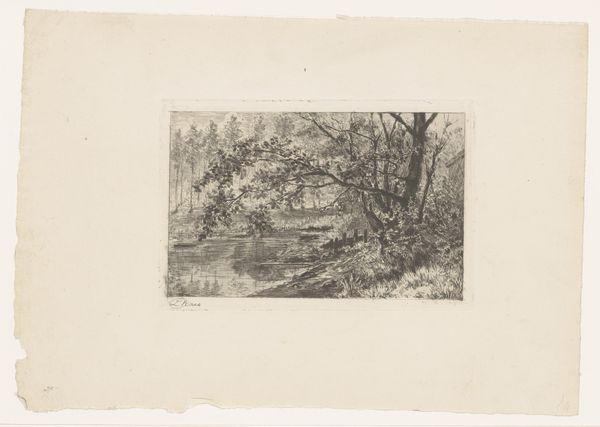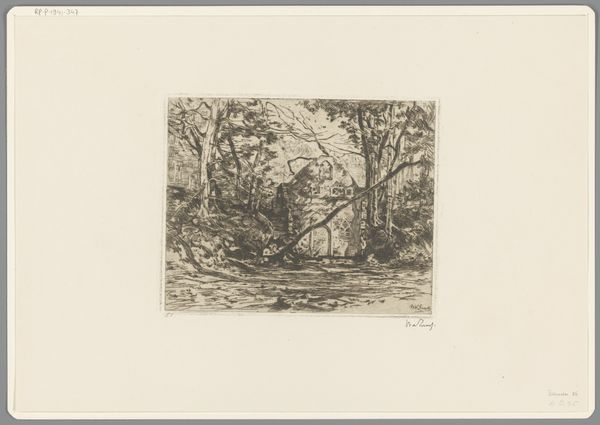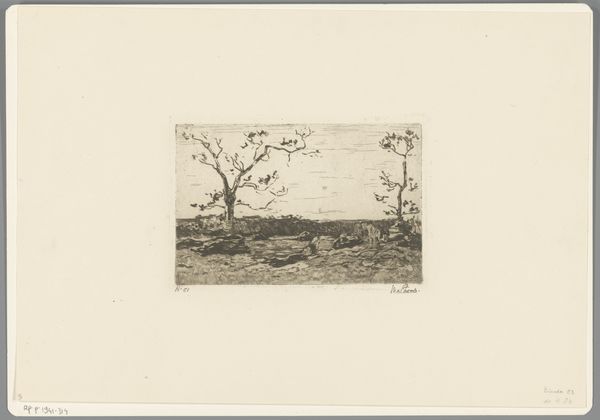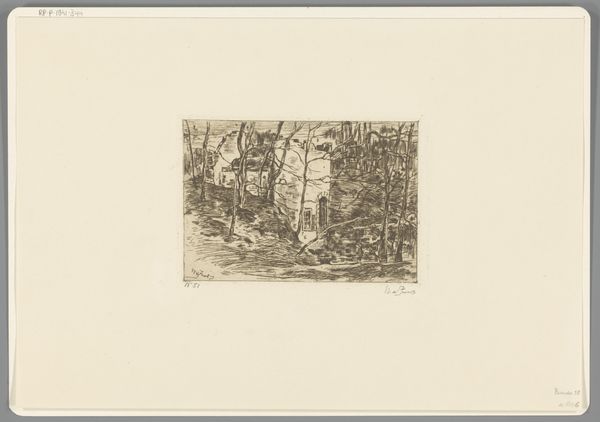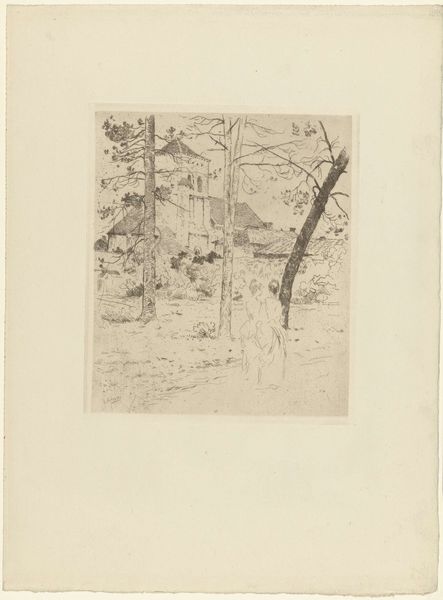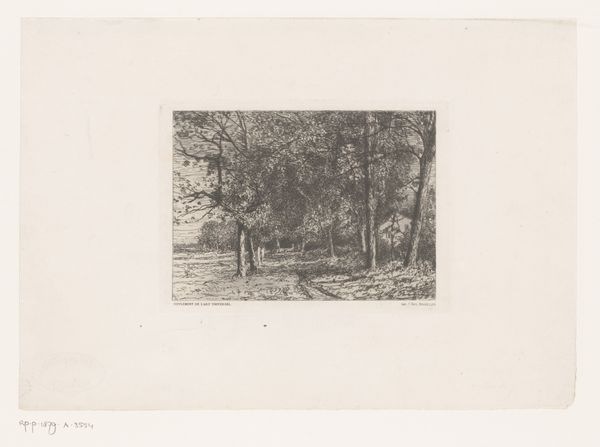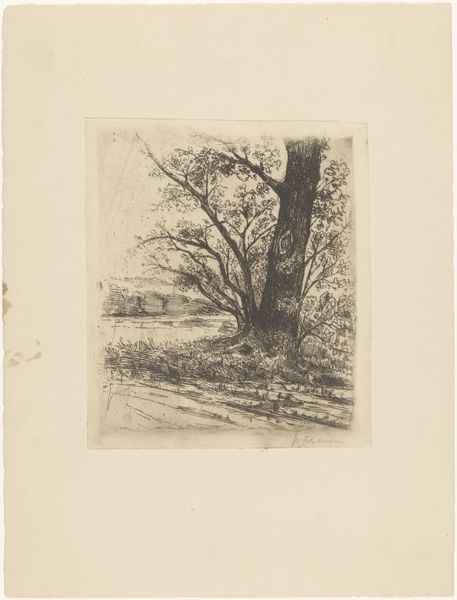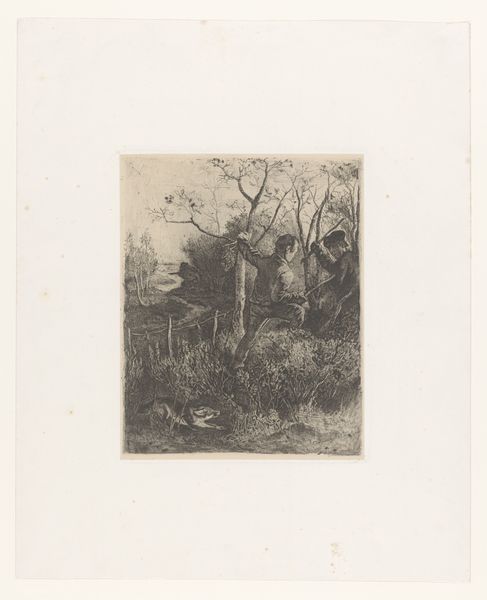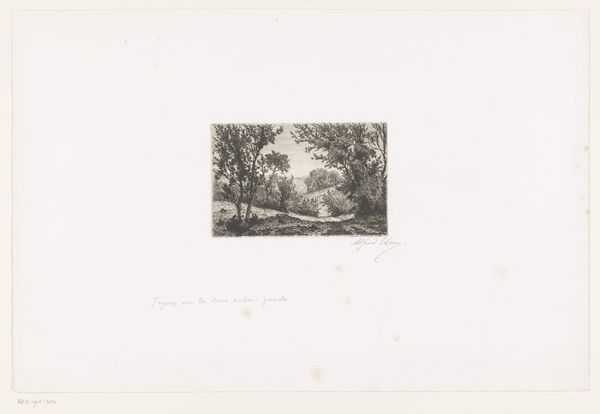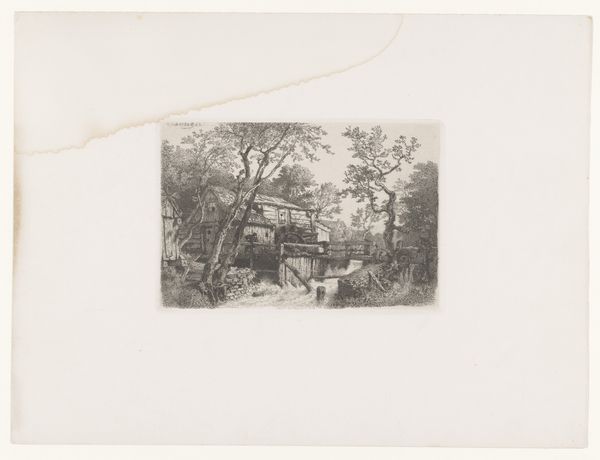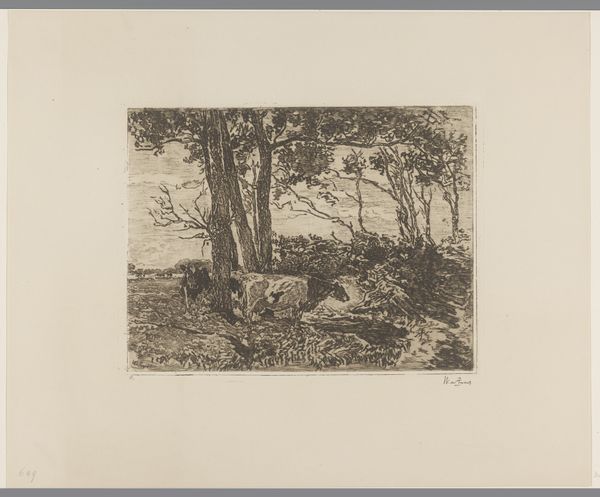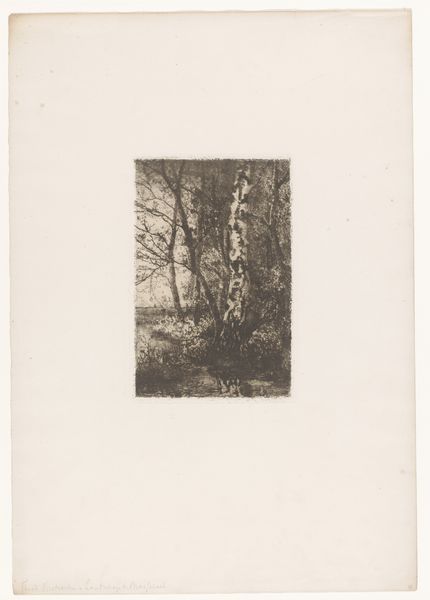
drawing, print, etching, paper
#
drawing
# print
#
etching
#
landscape
#
paper
#
forest
#
realism
#
monochrome
Dimensions: height 211 mm, width 235 mm
Copyright: Rijks Museum: Open Domain
Curator: This etching by Willem de Zwart, made sometime between 1872 and 1931, is titled "Bos met ingang naar schuilkelder" which translates to "Forest with Entrance to Shelter." What strikes you about it? Editor: The immediate mood is somber. The stark monochrome palette and dense layering of lines create a claustrophobic feel. The title, of course, primes you for that shelter, that uneasy stillness, but the heavy contrast emphasizes a visual tension—between what's visible and what is deliberately obscured by shadow. Curator: De Zwart was deeply embedded in the Hague School movement, focusing on naturalism and the everyday experiences of rural life. He actively sought out unassuming subject matter—here, rather than presenting an idyllic landscape, he captures this nondescript forest with its unsettling structure. How do you see this reflecting in the piece itself? Editor: Precisely. Instead of idealizing nature, it presents a more grounded and perhaps critical perspective. The shelter isn’t glorious; it appears almost swallowed by the earth. We could even examine this image through the lens of power dynamics; the landscape isn’t purely aesthetic, but indicative of spaces designated and controlled in unseen, pervasive ways. Curator: It’s worth remembering the era. This was a time of growing industrialization, escalating global tensions, and rapid social change. The stark contrast perhaps speaks to a growing awareness of the world outside the quiet Dutch countryside, a potential foreboding. De Zwart would have seen the societal changes as a sign that progress was indeed two-sided. Editor: Absolutely. I agree, it's as if that opening beckons—a visual representation of escapism—but it is nonetheless framed with this almost harsh reality that cannot be easily ignored. It's not merely an opening to retreat; it suggests confronting the realities inherent to its time and place. Curator: Looking at De Zwart’s greater oeuvre, this almost clandestine tone is markedly rare; a quiet moment to perhaps reflect on more significant disruptions. Editor: This is far more complex than what might seem, at first glance, like a standard landscape piece. It has spurred much contemplation. Curator: Indeed, it reveals a darker narrative and a deeper sense of inquiry.
Comments
No comments
Be the first to comment and join the conversation on the ultimate creative platform.
